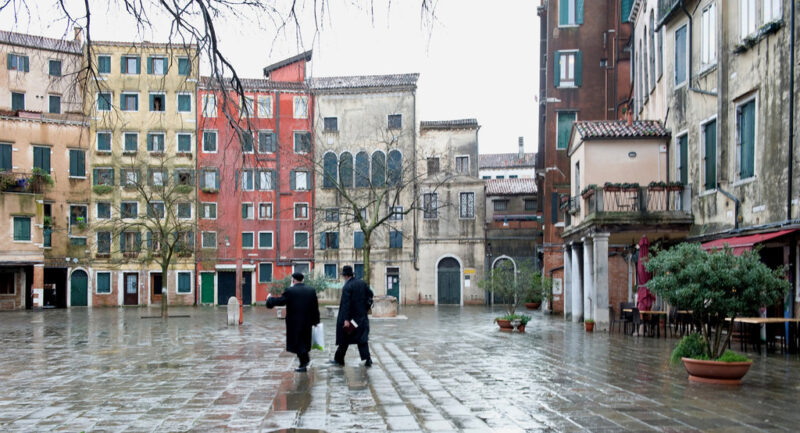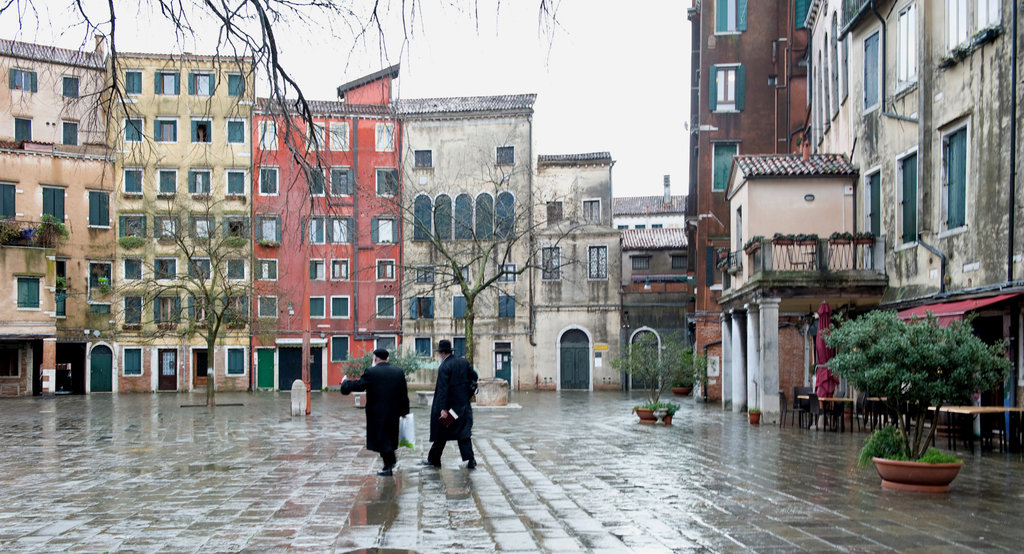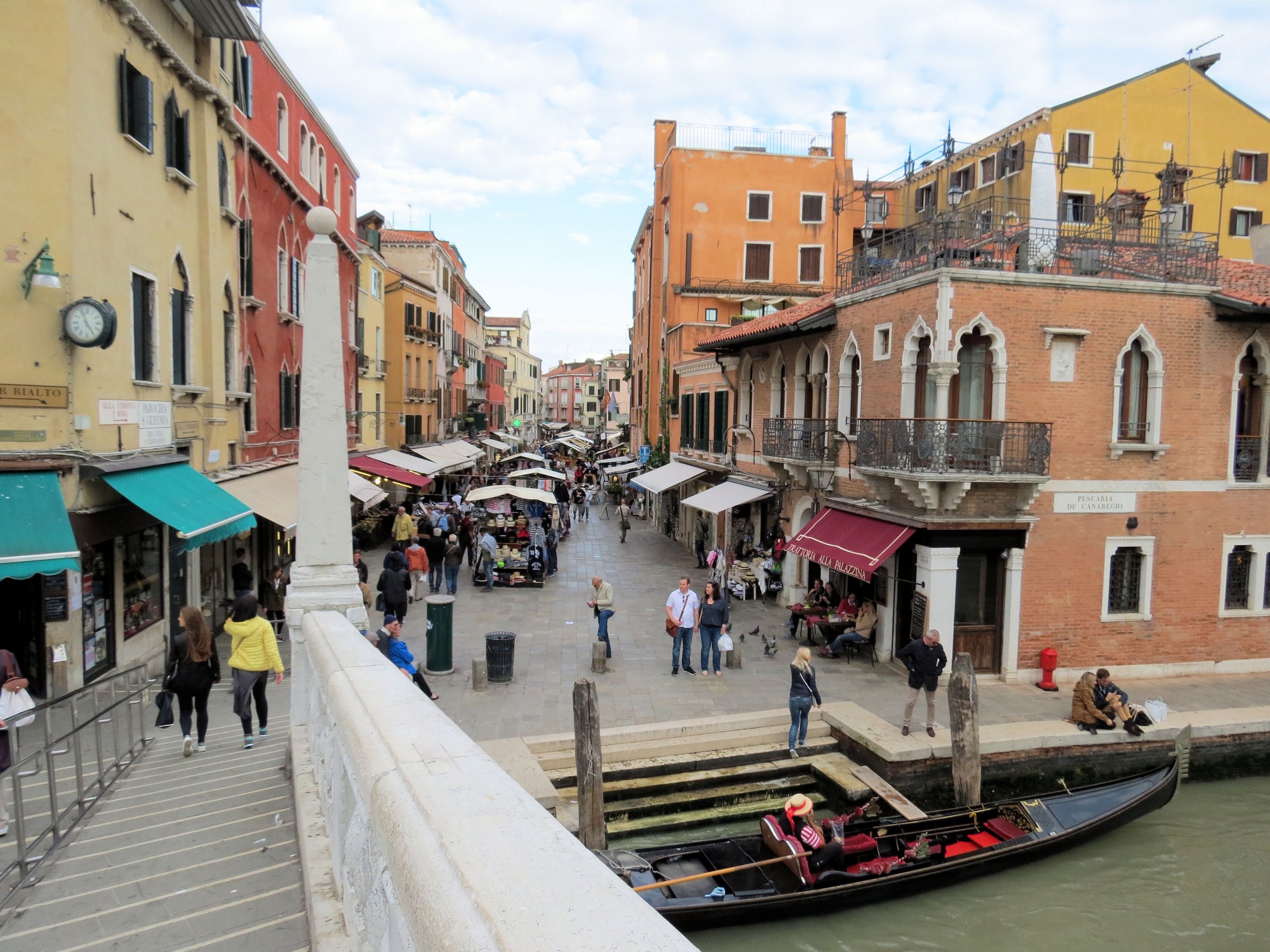Experiences, Venice
Kayaking in Venice: a unique experience
Venice, the enchanting city built on water in Italy, provides a unique perspective when explored from the labyrinth of its picturesque canals. But one might wonder, can you kayak in […]

Head to the Cannaregio district and you’ll find an interesting slice of city history: the Jewish Quarter Venice, known as the Ghetto. Between the 16th and 19th centuries, Venice’s Jewish population had to live in this area of the city, where a large number of people meant the buildings had to be taller to fit more accommodations. Whether you’re doing a Venice day trip or you’re here for a few days, don’t miss exploring this fascinating part of the city.

The Venetian Ghetto, also known as the Jewish Quarter Venice, was established by decree of Doge Leonardo Loredan on March 29, 1516 and is considered to be the oldest Jewish ghetto in the world. The Venetian Republic confined its Jews to a small area in the Cannaregio sestiere, one of the six districts of Venice.
Despite the restrictions and limitations placed upon them, the Jewish community in the Venice Jewish quarter thrived and became a hub of commerce and culture. The Ghetto housed several synagogues, kosher butchers, bakeries, and other businesses catering to the Jewish community.

Today, the Venetian Ghetto remains a vibrant and active neighbourhood, although the Jewish population is much smaller than it once was. Visitors can still explore the area’s winding streets and historic buildings, including the Jewish Museum of Venice, which showcases the history and culture of the Jewish community. You’ll also find lots of examples of work by Jewish textile producers and goldsmiths, all part of a collection spanning centuries and amassed since the museum opened.
The Venetian Ghetto was home to several synagogues, which played a central role in the religious and cultural life of the Jewish community. Despite the limitations imposed on them by the Venetian Republic, the Jews of the Ghetto were able to maintain a rich religious tradition and build beautiful places of worship. There are five synagogues in total, and the Jewish Museum is located near the three oldest synagogues in the Ghetto: the German Synagogue, the Canton Synagogue and the Italian Synagogue.
Another important synagogue is Schola Spagnola which is notable for its ornate stucco decorations and the impressive ark. There is also the Levantine Synagogue, or Schola Levantina which was built in the 16th century and features an unusual blend of Italian and Levantine architectural styles. You can take a guided tour of the three synagogues Schola Tedesca, Schola Canton and Schola Italiana via the Jewish Museum. Tours depart hourly, so you’ll easily find one to fit your schedule.
When you’ve finished your wander around the Jewish Quarter, don’t leave without sampling some Jewish cuisine at one of the Jewish Quarter Venice restaurants. Gam Gam Kosher is a great choice for Jewish favourites. They serve a range of Mediterranean and Jewish dishes, including hummus, falafel, grilled fish, and pasta. Panificio Giovanni Volpe is the perfect place to try Jewish pastries and breads.

The Venetian Ghetto is located in the Cannaregio district of Venice, and there are several ways to get there. The easiest way is by hopping on a waterbus (ACTV), the nearest stops being Guglie and San Marcuola, located just a few minutes walk from the Ghetto. From the Guglie stop, cross the bridge and turn right onto the Fondamenta de la Misericordia. The entrance to the Jewish Ghetto is just a short walk from there.
The Ghetto is also around five minutes walk from St Lucia train station if you’re visiting by train and want to visit the Ghetto while you’re in that part of Venice. If you’re already in the city centre, you can walk to the Jewish Ghetto. From the Rialto Bridge, follow the signs to the train station. After passing through the Campo San Polo, you will come to the Ponte delle Guglie. Cross the bridge and turn right onto the Fondamenta de la Misericordia and continue walking a little.
Experiences, Venice
Venice, the enchanting city built on water in Italy, provides a unique perspective when explored from the labyrinth of its picturesque canals. But one might wonder, can you kayak in […]
What to see
If you’re heading to Venice and you only have a couple of days, it’s worth planning your time to a loose schedule so that you can see as many of […]
Experiences, Venice
When, after a long day’s sightseeing, you want to sip a cocktail in an atmospheric bar, Venice has plenty of choices. But there’s one place to go if your beverage […]